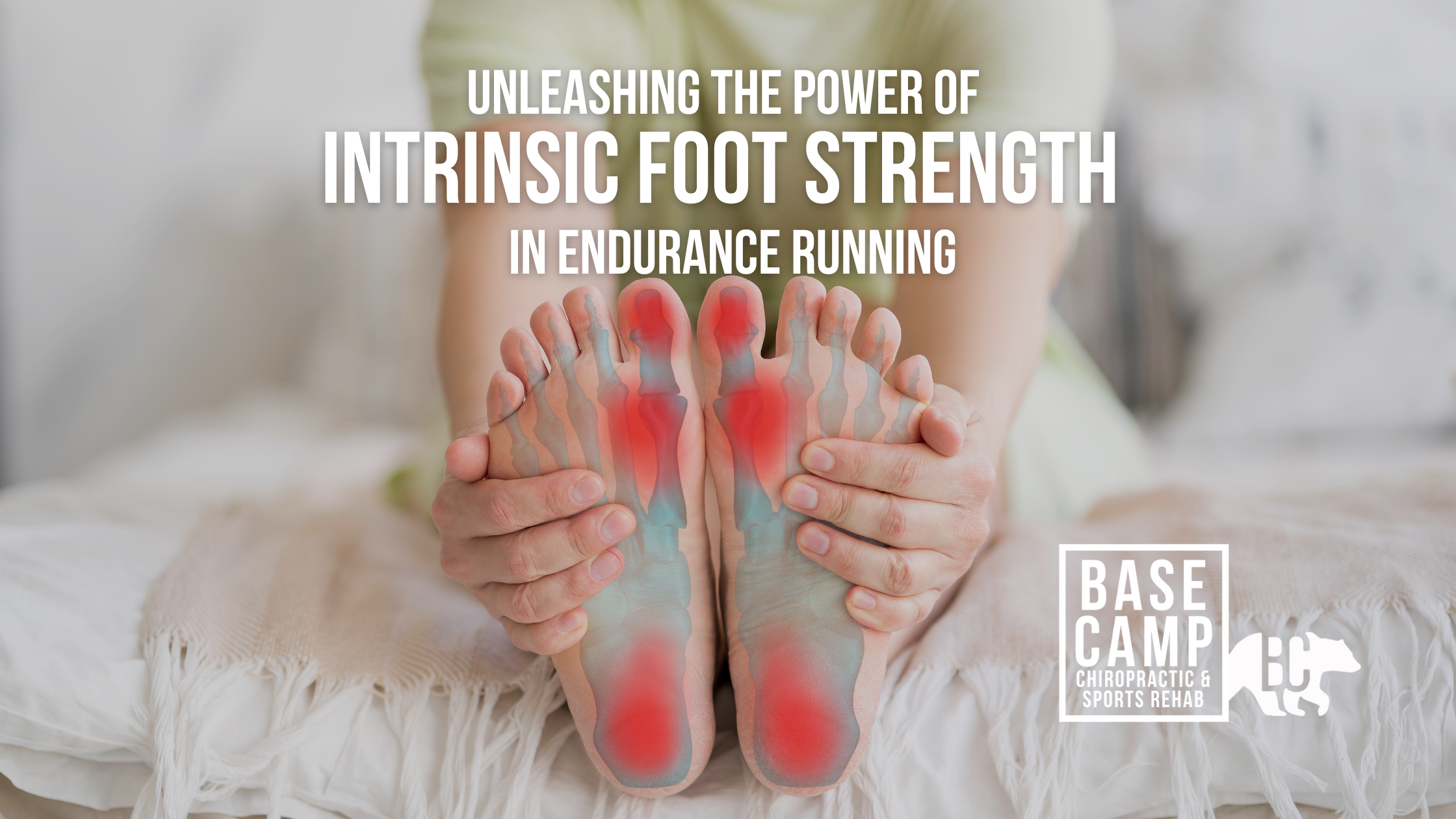
Blog
want to take a crack at your problems from home? Check out our blog posts and find the topics specific to you
Topics:
Core: Exercises Every Runner Should Be Doing - Part 3
Do these core exercises if you want to run faster and stay injury-free
This is Part 3 of a 6 parts series covering the exercises that Every Runner Should Be Doing.
Missed the First 2 Parts? Find them here
Part 2: Hip Exercises for Runners
All runners should have 1-2 strength sessions per week if they want to run faster and further while remaining injury-free.
Here are the exercise categories I start all my runners with:
Lower Legs
Hips and Thighs
Core
Compound Movements (integrating the trunk and lower body)
Upper Body Exercises
Foot Strength
Having a strong core when you are running has one primary function: making you more efficient.
If you have a strong and stable core you both CONSERVE more energy on each step AND your legs general more force be being anchored to a stiff trunk. This means you can run faster and further, and can even help prevent some injuries.
The core exercises I use are a circuit that targets each side of the trunk, and an anti-rotation exercise called the Pallof Press. All of these exercises are targeted at building ‘anti-movement’ strength.
Here are some videos and how I use them with my runners:
Core Training
The primary function of your core while running is to keep your trunk stable and stiff as an anchor for your limbs while preserving as much energy as possible as you bounce along the route.
The McGill Big 3 routine is a great intro for core training for running.
The Pallof press is another great one that focuses primarily on resisting rotation (a job that the core muscles have to do on every step).
Here is how I would use them if you are training for performance:
CORE CIRCUIT
Perform 1-3 reps of the full circuit for 3-5 sets, 3-5 days per week. Hold each position for 10-seconds and rest 2-seconds when switching positions.
Pallof Press
Choose the hardest progression you can perform with proper technique. Perform 5-10 reps per side for 3-5 sets.
To clarify…
In reality, you do not need to be doing THESE exercises. There are literally thousands of exercises you can choose from, these are just the ones that I like to see my patients and clients doing. But you should be doing SOME form of strength training. Both for injury prevention AND to improve your performance.
In general, I recommend some form of:
Lower Leg Specific Training
Hip Specific Training
Core Training (primarily “anti-rotation” or '“anti-movement“ exercises)
Compound Movements emphasizing the Posterior Chain Strength Exercises (glutes and hamstrings)
Basic Upper Body Strength exercises (1-2 pressing and pulling exercises)
Foot Strengthening
Cover all these bases and you are bound to feel better and run with more confidence
NEXT UP: Part 4 - Compound Exercises
Author: Dr Mark Murdoch, Chiropractor and Co-Founder at Base Camp Sport and Spine in Vernon, BC.
Mark Murdoch is a Doctor of Chiropractic with a Master’s Degree in Sports Medicine.
Contact: drmurdoch@basecampclinic.com
Instagram: Base.Camp.Doc
Hips: Exercises Every Runner Should Be Doing - Part 2
Hip exercises that every runner should be doing
This is Part 2 of a 6 parts series covering the exercises that Every Runner Should Be Doing.
Missed the Part 1: Lower Leg Training? Find it here: Lower Leg Exercises for Runners
All runners should have 1-2 strength sessions per week if they want to run faster and further while remaining injury-free.
Here are the exercise categories I start all my runners with:
Lower Legs
Hips and Thighs
Core
Compound Movements (integrating the trunk and lower body)
Upper Body Exercises
Foot Strength
The HIPS are the power generators when you run.
They are what propel you forward and keep you upright. They work HARD on your runs.
In order to prepare your hips for running, I use the exercises below to build strength and endurance.
Here are some of the specific exercises I recommend to my running patients to help prepare them for the demands of running:
HIPS and thighs
Hip Flexor Training
The hip flexors are responsible to lift your thighs every step. This is especially important for uphill running.
Glute and hamstring Work
The Glutes and Hamstrings are part of what we refer to as the ‘Posterior Chain’, which is extremely involved in running. Having strong glutes and hamstrings makes you a better runner.
The truth is…
In reality, you do not need to be doing THESE exercises. There are literally thousands of exercises you can choose from, these are just the ones that I like to see my patients and clients doing. But you should be doing SOME form of strength training. Both for injury prevention AND to improve your performance.
In general, I recommend some form of:
Lower Leg Specific Training
Hip Specific Training
Core Training (primarily “anti-rotation” or '“anti-movement“ exercises)
Compound Movements emphasizing the Posterior Chain Strength Exercises (glutes and hamstrings)
Basic Upper Body Strength exercises (1-2 pressing and pulling exercises)
Foot Strength
Cover all these bases and you are bound to feel better and run with more confidence
NEXT UP: Part 3 - Core training
Author: Dr Mark Murdoch, Chiropractor and Co-Founder at Base Camp Sport and Spine in Vernon, BC.
Mark Murdoch is a Doctor of Chiropractic with a Master’s Degree in Sports Medicine.
Contact: drmurdoch@basecampclinic.com
Instagram: Base.Camp.Doc
Lower Leg: Exercises Every Runner Should Be Doing - Part 1
Lower Leg Exercises that Every Runner Should Be Doing for injury prevention and performance
This is Part 1 of a 6 Part Series covering Exercises Every Runner Shoulder Be Doing
Running is great.
It truly is.
Running is good for you.
Runners have less disease and higher pain tolerance than non-runners.
BUT…
Running is NOT a complete activity on its’ own.
Running has one of the highest injury rates of all physical activities, with rates ranging from less than 5% to OVER 80% of runners getting injured every year. Whoa.
This is, at least in part, because runners LOVE TO RUN. Combine that with the natural human desire to improve and progress. Unfortunately, that combo can often lead to overdoing things. Too much, too soon, without preparation.
In order to combat this, you have two options:
Run Less (unlikely)
Increase your Capacity
Personally, out of the two options above, I think that Increasing your Capacity is much more enticing. In order to increase your resilience to injury, strength training is essential. On top of making you a faster runner, it also makes you more durable. Here are the exercise categories I start all my runners with:
Lower Legs
Hips and Thighs
Core
Compound Movements (integrating the trunk and lower body)
Upper Body Exercises
Here are some of the specific exercises I recommend to my running patients to help prepare them for the demands of running:
Part 1: LOWER LEG
Calf Raises
The calves absorb MULTIPLE TIMES your body weight in force every step while running. Preparing your calves for this is extremely important.
Tibialis Anterior (Toe) Raises
Your Tibialis Anterior is a muscle on the front of your shin. It controls how quickly your toes are lowered to the ground on every single step, and works really hard when you are running.
I lied to you… You don’t have to do these exercises…
In reality, you do not need to be doing THESE exercises. There are literally thousands of exercises you can choose from, these are just the ones that I like to see my patients and clients doing. But you should be doing SOME form of strength training. Both for injury prevention AND to improve your performance.
In general, I recommend some form of:
Lower Leg Specific Training
Hip Specific Training
Core Training (primarily “anti-rotation” or '“anti-movement“ exercises)
Compound Movements emphasizing the Posterior Chain Strength Exercises (glutes and hamstrings)
Basic Upper Body Strength exercises (1-2 pressing and pulling exercises)
Foot Strength
Cover all these bases and you are bound to feel better and run with more confidence
NEXT UP: Part 2 - hips and glutes
Author: Dr Mark Murdoch, Chiropractor and Co-Founder at Base Camp Sport and Spine in Vernon, BC.
Mark Murdoch is a Doctor of Chiropractic with a Master’s Degree in Sports Medicine.
Contact: drmurdoch@basecampclinic.com
Instagram: Base.Camp.Doc
References:
Pain Processing https://pubmed.ncbi.nlm.nih.gov/32849117/
Ultramarathoner pain threshold https://pubmed.ncbi.nlm.nih.gov/29966771/
Running and all-cause mortality https://pubmed.ncbi.nlm.nih.gov/31685526/
Running and longevity https://pubmed.ncbi.nlm.nih.gov/28365296/
Is your Breathing on Point?
How to check if your breathing is optimized for performance
As a Chiropractor in Vernon, I see a lot of runners. I am sure this is the same for most Vernon Chiropractors and Physiotherapists, but this is something that is often overlooked. In this article, Dr Alex Hueston shares his experience transitioning from road running in his training to a trail race.
Written by Dr. Alex Hueston. Chiropractor at Young Health Management in Duncan, BC (Vancouver Island). www.younghealthmgmt.com
Breath in, Breath out . . . Sounds simple right?!
Yes and no. Today in this post we are going to talk about the power of your breath and how in my chiropractic treatments I use breathing techniques to help a lot of my patients with various types of pain.
When we are talking about breathing we can divide breathing into two categories: diaphragmatic breathing and accessory breathing. Accessory breathing refers to the use of the accessory ventilation musculature (scalene, the sternocleidomastoid, the pectoralis major, the trapezius, and the external intercostals). This type of breathing is designed to be used in physically and emotionally stressful environments.
How do I know if I am breathing with my accessory muscles?
When these muscles are used, we will see the chest and shoulders rise. This may be why when we get scared we get the feeling our heart is jumping out of our chest as we are likely rapidly recruiting these muscles. With the rise in chronic stress in the population, more and more people are breathing via stress pathways leading to tension-like symptoms in their upper back, shoulders, the neck that can even cause headaches called tension headaches.
How can I improve my breathing?
The good news is there are many health disciplines that can coach people with their breathing from chiropractors and physical therapists to kinesiologists and yoga instructors.
Today I am going to go through a step-by-step strategy on how to perform diaphragmatic breathing. With the use of diaphragmatic breathing, we can see a potential decrease in heart rate and blood pressure, relaxation-related hormonal changes and improvements in core stabilization.
Let’s get started!
Step-by-Step Diaphragmatic Breathing
Beginning Diaphragmatic Breathing
Start by lying down on your back in a comfortable position. You may have your head and legs supported if you prefer.
Place one hand on your chest and the other hand over your belly button.
Inhale through your nose, draw your breath down to your stomach and you should feel your stomach/abdomen push up into your bottom hand while your chest remains still.
Exhaling you should then feel your abdomen drop back down to the floor while your chest continues to remain still.
Repeat this sequence for up to 5-10 minutes at a time. You can perform this exercise multiple times a day.
Advanced Diaphragmatic Breathing
If you can have been performing the above breathing exercise, I encourage you try advancing to what I call “360-degree breathing”
Breathing Into Your Sides
Lying down as you were previously, place your hands now on the lowest rib at your side so your thumbs and pointing towards your back and your remaining fingers are pointing towards your belly button.
When inhaling, visualize and feel your abdomen push out into your hands while your chest remains still.
When exhaling, bring your abdomen back to the starting position.
Perform this for at least 10 consecutive repetitions
Breathing Into Your Back
Lying down as you were previously, place your hands now so they are behind your back between your hip and ribs
When inhaling, visualize and feel your abdomen apply pressure on your hands increasing the pressure of your back on the floor. Make sure your chest remains still.
When exhaling, release that pressure and return to the starting position.
Typically this is easier to feel with a longer, deep breath.
360-Degree Breathing
You have now felt all the directions your breath can move through diaphragmatic breathing and now it is time to try to breathe into all these directions at once.
If you need feedback it may help to loosely put a belt around the level of your belly button. When inhaling, visualize putting equal pressure on the belt from all directions. Again the chest should remain still throughout.
Practice, Practice, Practice
Like all exercises, breathing takes patience and consistent practice to build up a mind-body connection. The more often you practice on your breath, the more natural it will become and the more often you will find yourself using it in your daily life.
I hope this exercise helped you today and if you are looking for help with your road to recovery book an appointment for an initial assessment and treatment with myself or another member of the Young Health Management team.
Author:
Dr. Alex Hueston is a Chiropractor in Duncan, BC at the Young Health Management clinic. www.younghealthmgmt.com
Training to fight a dragon
How I am preparing for the Bush Babes and Bros race clinic and Slay the Dragon 50km
With Spring running right around the corner, I am starting my prep. I am going to be participating in the Bush Babes and Bros Race Specific Training Clinic (Dragon's gonna be SLAYED this summer) and I am STOKED!
But I also know that it means I am going to be running more km than ever before, so I want to be prepared.
Going into the spring, I am focused on 3 things:
1) Building my Aerobic Base. It has been a long time since I have done extended cardio, and having decent cardiovascular fitness goes a long way in training for a long run. For the past two weeks, I have been putting in about 20-25 minutes of moderate level aerobic (cardio) training (heart rate usually the 140-160 beats per minute range). March 1st the plan is to start 30-45 minutes of steady-state cardio at an intensity that keeps me in the 135-155 beats per minute.
2) Tendon Prehab (specifically my Achilles). As a mid/forefoot runner, I know my ankle and Achilles are going to take a lot of that load (especially with the hills that I know Dawna has in store for us) so I want to be prepared for it.
3) Managing a mild hip-flexor strain. Right now it is an annoyance, but I know if ignored it has the potential to wreak havoc on my training, so I am starting the rehab process. Since the pain is mild, I am focusing on adding STRESS to the muscle, which both stimulates healing and helps build my capacity, making me less susceptible to hip flexor strains and pain in the future. Add in the additional benefit of improving running muscular endurance and foot turnover, and it’s a no-brainer.
This week I add-in my rehab/prehab plan which currently looks like this:
A1 - Calf Raises (3-Direction) to prep my calves and Achilles. 15 repetitions with feet pointing in each direction (forward, outwards, inwards)
A2 - Psoas (Hip Flexor) March to rehab my hip flexor (and then improve my foot turnover/cadence). 10 repetitions per leg of concentric marches.
Want to follow my training journey? I will be documenting my training on both the Adventure Athlete Podcast (coming soon) and on social media (Instagram)
Author: Dr Mark Murdoch, Chiropractor and Co-Founder at Base Camp Sport and Spine in Vernon, BC.
Mark Murdoch is a Doctor of Chiropractic with a Master’s Degree in Sports Medicine.
Contact: drmurdoch@basecampclinic.com
Book an Appointment with Dr Murdoch: book here
Instagram: Base.Camp.Doc




















How running injuries happen